To further acquire information about Alexander Ramsey and Spencer Baird, I proceeded to search within the newspapers from the nineteen-century. For my investigation I used the 19th Century U.S. Newspapers database, the Historical Newspapers database, and Chronicling America Collection from the Library of Congress. The first resource that was used for the research was the 19th century U.S Newspapers Database, which I found in the Library Database Finder of Dickinson College. I decided to start my investigation writing Alexander Ramsey using the search engine, I was interested in knowing more about Alexander Ramsey’s life when he was governor of Minnesota, thus I decided to do an advance search within the database to narrow the information obtained. In the advanced search engine, I looked up Alexander Ramsey specifically within the years 1849 to 1864. The reason why I started with 1849 was because that year, after Ramsey helped Zachary Taylor become president of the United States, Ramsey was appointed by Taylor as the designated governor of Minnesota. At first, Ramsey was hesitant to accept the job because he was more interested in being the Collector of the Port of Philly, which had a lot of economic benefits. However, he accepted it because he though it would help his political career. Unfortunately, I was not able to obtain the information that I wanted, thus I decided to further narrow my advanced search by adding the keywords: Ramsey, governor, Minnesota and the date range, 1849-1864. With this new detailed advanced search, I was able to obtain 306 results. The results ranged from when he was appointed governor, to when he was elected governor, and his involvement in the Dakota War.
“He is social, hearty and good humored, but cool, cautious, shrewd and persevering.” [1]
Out of all of the results, the article that got my attention was from the Milwaukee Sentinel and Gazette newspaper. The article was published on April 26, 1849 and talked about Alexander Ramsey being appointed governor of Minnesota. In the article it stated that they got information regarding the appointment of Ramsey from a variety of newspapers located in Philadelphia. Then the article talks about the different faculties and qualities that made Ramsey the perfect choice for being assigned governor of Minnesota, which included his extensive experience and character. The article also gives a detailed description of his political career, which started with working in the “Secretary of the Harrison Electoral College of 1840.” [2] Afterwards the article describes his German and Irish descent, and reinstates Ramsey’s character. A point that got my attention from the article was at the end when it stated that Ramsey had the ability to deal with the Native Americans from the region. Because of the way the Milwaukee Sentinel and Gazette was talking about Ramsey in the article I was curious to know its partisan affiliation. In order to obtain the information, I search on Google “Milwaukee Sentinel and Gazette partisan affiliation 1800s”. I found a reliable source, which by no surprise said that it was a Whig paper; I also found a book called Memoirs of Milwaukee County in Google Books. The book described the Milwaukee Sentinel and Gazette as “then the leading Whig organ in the Territory.” [3] Since the moment I read the article I knew there had to be a connection between the party and the paper because while you read the paper you notice that it is biased.
- Article: “The New Governor of Minnesota” Courtesy of the Nineteen Century U.S Newspapers database
- Article: “The New Governor of Minnesota” Courtesy of the Nineteen Century U.S Newspapers database
- Article: “The New Governor of Minnesota” Courtesy of the Nineteen Century U.S Newspapers database
Because I was even curious about how the Dakota War was portrayed by newspapers in general, I decided to search it on the 19th Century U.S. Newspapers database. To start my search, I did the advanced search and typed Dakota war, governor Ramsey, and set the publication dates from 1862 to 1864, but I was not able to found any results. Then I remember that the tribe that participated in the War was the Sioux, so I decided to take out Dakota War in the search and replace it for Sioux War. By replacing the names, I obtained a result from the Milwaukee Daily Sentinel. The article was useful because it described the war. Even though I obtained one result, I decided to shift the advance search in order to try to obtain a broader amount of results. I proceeded to search using the following keywords: Sioux, Ramsey and the range of the dates, 1862-1864. With this new search I was able to obtain 45 results. Reading the articles, sparked my curiosity on what was Ramsey’s point of view of the war. However, because within the results there were mostly the same type of articles, I proceeded to change databases and search within the Historical Newspapers database.
“The public safety imperatively requires it. Justice calls for it. Humanity itself outraged by their unutterable atrocities demand it. The blood of the murdered cries to heaven for vengeance on these assassins of women and children.” – Gov. Ramsey [4]
On the Historical Newspaper database I started my research by typing governor Ramsey, Sioux, Indian War and set the publications from the years 1862 to 1864. From the results, I selected one that caught my attention because of its caption. The caption was “Governor Ramsey’s message”. [5] The article was from September 17, 1862 published on the Chicago Tribune. It was Ramsey’s message about the conflict. After reading the article I decided to choose it to continue my research because it gave an inside perspective of what Ramsey was thinking during the first part of the war. The Chicago Tribune was a six-column newspaper and the article covered two of those six. On the article, there were extracts of the message that Ramsey gave. These extracts talked about the beginning of the conflict, which was when a group of four Indians from the Sioux tribe on August 17, 1862, killed a white family of six. [6] In his message Ramsey also talked about his plan to stop the conflict; which was by forming a campaign against the tribe which final goal to be the kill the entire tribe. Ramsey also talked about the punishments he was going to implement which were killing the Indians. Because the Chicago Tribune gave extracts of Ramsey’s message I got curious about which partisan affiliations it had. After searching I found that it was affiliated with the Republican party.
- Article: “Governor Ramsey’s Message” Courtesy of Historical Newspaper database
- Article: “Governor Ramsey’s Message” Courtesy of Historical Newspaper database
- Article: “Governor Ramsey’s Message” Courtesy of Historical Newspaper database
- Article: “Governor Ramsey’s Message” Courtesy of Historical Newspaper database
- Article: “Governor Ramsey’s Message” Courtesy of Historical Newspaper database
- Article: “Governor Ramsey’s Message” Courtesy of Historical Newspaper database
- Article: “Governor Ramsey’s Message” Courtesy of Historical Newspaper database
- Article: “Governor Ramsey’s Message” Courtesy of Historical Newspaper database
- Article: “Governor Ramsey’s Message” Courtesy of Historical Newspaper database
- Article: “Governor Ramsey’s Message” Courtesy of Historical Newspaper database
- Article: “Governor Ramsey’s Message” Courtesy of Historical Newspaper database
For my research on Spencer F. Baird I decided to begin the search within the Historical Newspaper database. With Baird, I was curious to know more about his work in the Smithsonian Museum. It intrigued me that the first 10 articles were obituaries of his death from different newspapers. This made me think that he had a great impact in his job and community. One that struck me was from October 11, 1887, published in The Washington Post. The caption of the article read “The Late Prof. Baird’s Will“. [7] Even though the article is extremely short it had a great amount of information. The article stated that Baird would leave everything to his wife and daughter and if they were to die without heirs all of his possessions would go to the Smithsonian. I was impressed they would release that information to the press because it never occurred me the press was allowed to release someone’s will.
“It may safely be estimated that at least three-fourths of scientific exchanges of this country and of Europe now pass through the Smithsonian Institution” – Spencer F. Baird [8]
To obtain more information, I decided to continue my research in the Chronicling America Collection from the Library of Congress. The keywords chosen for this search engine were the following: Spencer F. Baird, Smithsonian, and the publications ranged from 1850-1887. I decided to range the publications between these years because Baird started working in the Smithsonian Institution on 1850 and he died in 1887. Similarly, to the past results, the results obtained from this search were mostly obituaries. However, I was able to find an article published by the Weekly National Intelligencer in January 14,1854, that I thought would be relevant to the information that I was striving to obtain. The newspaper was a six column newspaper and the article was two and half columns long. The article was a detailed yearly report that the Smithsonian needed to present to Congress informing the operations of the year, which included publications, travels, collections, books received and reports. For me this was really interesting because I had never heard that before that the Smithsonian had to give annual reports. The article describes with detail parts of the report. It also mentions a special report that Baird made about scientific exchanges between Europe and the Smithsonian, and scientific explorations. Personally, I considered this article to be interesting because of the amount of information it has regarding how the Smithsonian used to operate, and Baird’s involvement in it after.
- Article: “The Smithson Institution” Courtesy of Chronicling America (Library of Congress)
- Article: “The Smithson Institution” Courtesy of Chronicling America (Library of Congress)
- Article: “The Smithson Institution” Courtesy of Chronicling America (Library of Congress)
- Article: “The Smithson Institution” Courtesy of Chronicling America (Library of Congress)
- Article: “The Smithson Institution” Courtesy of Chronicling America (Library of Congress)
- Article: “The Smithson Institution” Courtesy of Chronicling America (Library of Congress)
- Article: “The Smithson Institution” Courtesy of Chronicling America (Library of Congress)
- Article: “The Smithson Institution” Courtesy of Chronicling America (Library of Congress)
[1]”The New Governor of Minnesota,” Milwaukee Sentinel and Gazette, pag. 2, column 2 (Milwaukee), April. 5, 1849. link of article
[2] “The New Governor of Minnesota,” Milwaukee Sentinel and Gazette, pag. 2, column 2 (Milwaukee), April. 5, 1849. link of article
[3] Watrous, Jeremy Anthony, Memoirs of Milwaukee County (Madison : Western Historical Association, 1909), 97. Link
[4] “Governor Ramsey’s Message,” Chicago Tribune, pag. 3, column 3 (Chichago), Sep. 17, 1862. link of article
[5] “Governor Ramsey’s Message,” Chicago Tribune, p. 3, column 3 (Chichago), Sep. 17, 1862. link of article
[6] “Governor Ramsey’s Message,” Chicago Tribune, p. 3, column 3 (Chichago), Sep. 17, 1862. link of article
[7] “The Late Prof. Baird’s Will,” The Washington Post, p. 3, column 2 (Washington), Oct. 11, 1887. link of article
[8] “The Smithson Institution,” Weekly National Intelligencer, p. 4, column 1-3, Jan. 14, 1854 Link of article
References:
“Governor Ramsey’s Message.” Chicago Tribune, pag. 3, column 3 (Chichago), Sep. 17, 1862. link of article
“The Late Prof. Baird’s Will.” The Washington Post, p. 3, column 2 (Washington), Oct. 11, 1887. link of article
“The New Governor of Minnesota.” Milwaukee Sentinel and Gazette, pag. 2, column 2 (Milwaukee), April. 5, 1849. link of article
“The Smithson Institution,” Weekly National Intelligencer, p. 4, column 1-3, Jan. 14, 1854 Link of article
Watrous, Jeremy Anthony. Memoirs of Milwaukee County. Madison: Western Historical Association, 1909, 97. Link
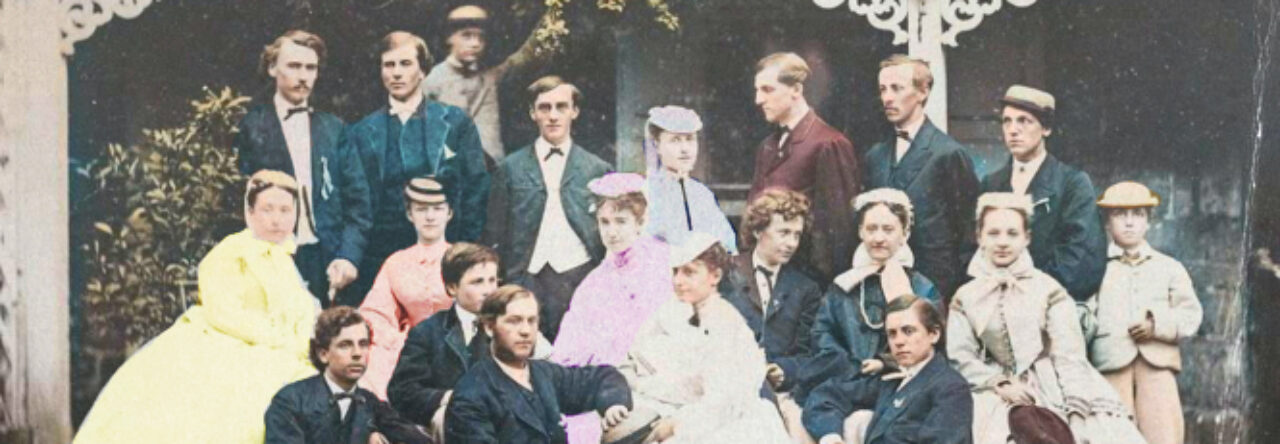
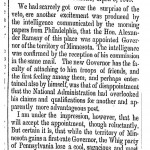
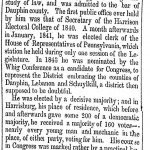
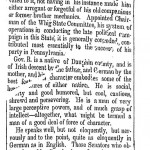
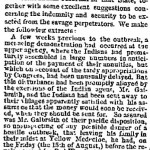
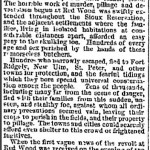
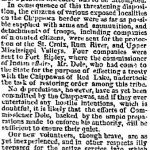
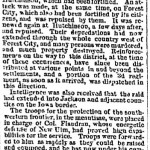
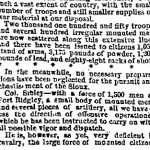
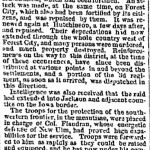
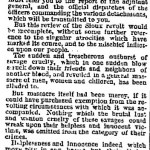
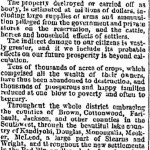
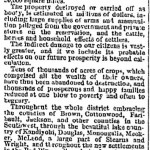
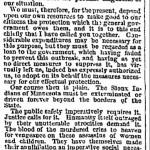
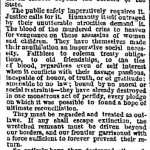
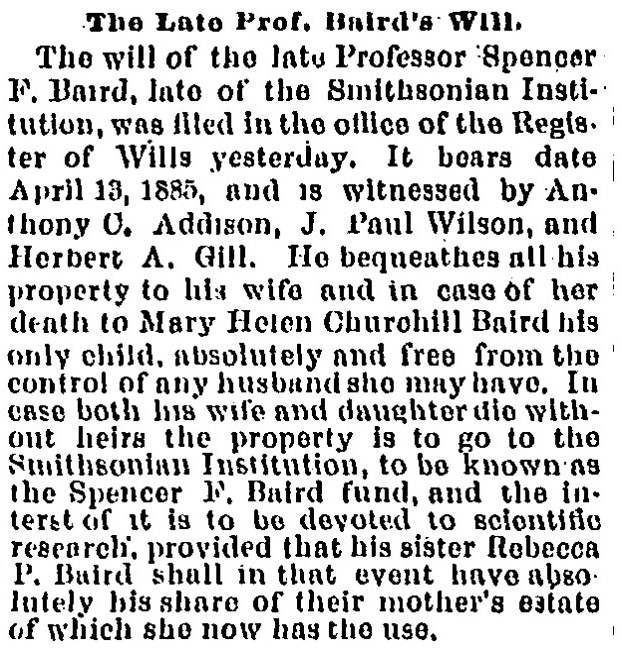
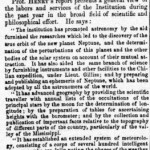
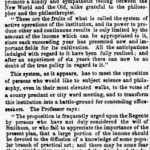
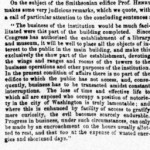
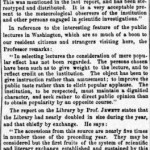
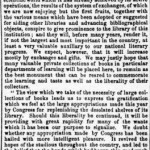
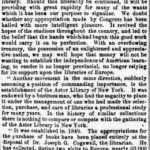
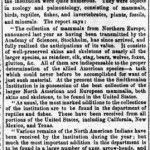
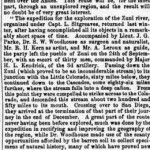
Leave a Reply